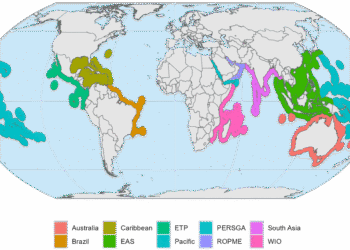In today’s competitive market, the demand for unique and secure product labeling has never been higher. Among the myriad of options available, hologram sticker printing stands out as a cutting-edge solution that combines aesthetic appeal with enhanced security features. Hologram stickers are not just visually captivating; they also serve as a powerful tool against counterfeiting and brand duplication. This article delves into the significance, applications, and processes involved in hologram sticker printing, highlighting why it has become an indispensable asset for businesses across various industries.
Understanding Hologram Stickers
Hologram stickers are specialized labels that feature three-dimensional images created using laser technology. These images, often shimmering with a spectrum of colors, are crafted through interference patterns generated by a split laser beam. The result is a sticker that changes appearance when viewed from different angles, making it exceptionally difficult to replicate. This unique visual effect not only catches the eye but also serves as a deterrent to counterfeiters.
The Importance of Hologram Stickers
- Security and Authentication: The primary advantage of hologram stickers lies in their security features. They are widely used to authenticate products, documents, and packaging. Given their complex production process, replicating a hologram sticker is extremely challenging, making them an effective tool in the fight against counterfeiting. Brands can ensure that their customers receive genuine products, thereby maintaining their reputation and customer trust.
- Brand Enhancement: Beyond security, hologram stickers add a touch of sophistication and premium appeal to products. The dynamic and colorful appearance of these stickers can enhance the overall look of packaging, making products more attractive to consumers. This can be particularly beneficial in industries such as cosmetics, electronics, and luxury goods, where the visual appeal of packaging plays a crucial role in influencing purchasing decisions.
- Tamper Evident: Hologram stickers often come with tamper-evident features. If someone tries to remove or tamper with the sticker, it leaves behind a visible residue or pattern, indicating that the product has been interfered with. This feature is especially useful for high-value products, pharmaceuticals, and official documents.
Applications of Hologram Stickers
- Product Packaging: Hologram stickers are extensively used in product packaging across various industries. From electronics and pharmaceuticals to cosmetics and luxury goods, these stickers not only enhance the visual appeal of the packaging but also provide a layer of security against counterfeiting.
- Official Documents: Governments and organizations use hologram stickers on official documents such as passports, ID cards, certificates, and currency. The security features of hologram stickers help in preventing forgery and unauthorized duplication of these critical documents.
- Brand Protection: Companies use hologram stickers to protect their brand identity. By incorporating holographic labels on their products, brands can ensure authenticity and prevent counterfeit products from entering the market. This is particularly important for industries like fashion, electronics, and automotive parts.
- Promotional Materials: Hologram stickers are also used in promotional materials to create a lasting impression. Their unique visual effect makes them stand out, helping brands to attract and retain customer attention.
The Hologram Sticker Printing Process
The process of creating hologram stickers is complex and involves several key steps:
- Master Origination: The first step in hologram production is creating a master hologram. This is done using a laser to record interference patterns on a photosensitive material. The master hologram serves as the template for all subsequent copies.
- Electroforming: Once the master hologram is created, it undergoes electroforming, a process where a thin layer of metal, typically nickel, is deposited onto the master. This creates a durable stamper that can be used to emboss the holographic image onto other materials.
- Embossing: The stamper is then used to emboss the holographic image onto a substrate, typically a thin film of plastic or metal foil. This process transfers the intricate patterns of the hologram onto the new material, creating a replica of the original master hologram.
- Lamination: The embossed holographic film is laminated onto adhesive backing materials, turning it into a sticker. The lamination process ensures that the holographic image is protected and can withstand handling and environmental factors.
- Die-Cutting: Finally, the laminated holographic film is cut into the desired shapes and sizes to create individual stickers. These stickers can then be applied to products, documents, or packaging as needed.
Future Trends in Hologram Sticker Printing
As technology continues to advance, the future of custom hologram stickers uk looks promising. Innovations in laser technology and materials science are likely to lead to even more sophisticated and secure holographic solutions. Additionally, the integration of hologram stickers with digital technologies such as QR codes and NFC (Near Field Communication) chips is expected to enhance their functionality, providing consumers with interactive and verifiable information about the product.
In conclusion, hologram sticker printing offers a blend of aesthetic appeal and security that is unmatched by other labeling solutions. Its ability to authenticate products, protect brands, and enhance packaging makes it an invaluable tool for businesses across a wide range of industries. As counterfeiters become more sophisticated, the need for advanced security features like hologram stickers will only continue to grow, cementing their place as a cornerstone of modern packaging and product authentication.










